
Base, which started with the mission of onboarding more users on-chain, launched its mainnet in June last year. Through branding and marketing campaigns focused on the community, creators, and builders, it has emerged as a hub for consumer-oriented on-chain applications in less than a year
Base has recently seen a surge in users and transactions due to market factors like reduced rollup fees from EIP-4844 and the meme coin craze, combined with internal factors such as the growth of the Farcaster community and the increase in on-chain applications.
Unlike other blockchain ecosystems primarily focused on DeFi and infrastructure, Base features consumer-oriented applications similar to traditional Web2 services. This is driven by its unique community, brand, and the resulting virtuous cycle of more applications onboarding.
Currently, the Base ecosystem is experiencing the most growth in social and community applications centered around Farcaster. However, new categories of on-chain applications, including content, gaming, and commerce, are emerging, showing significant potential for broader user expansion.
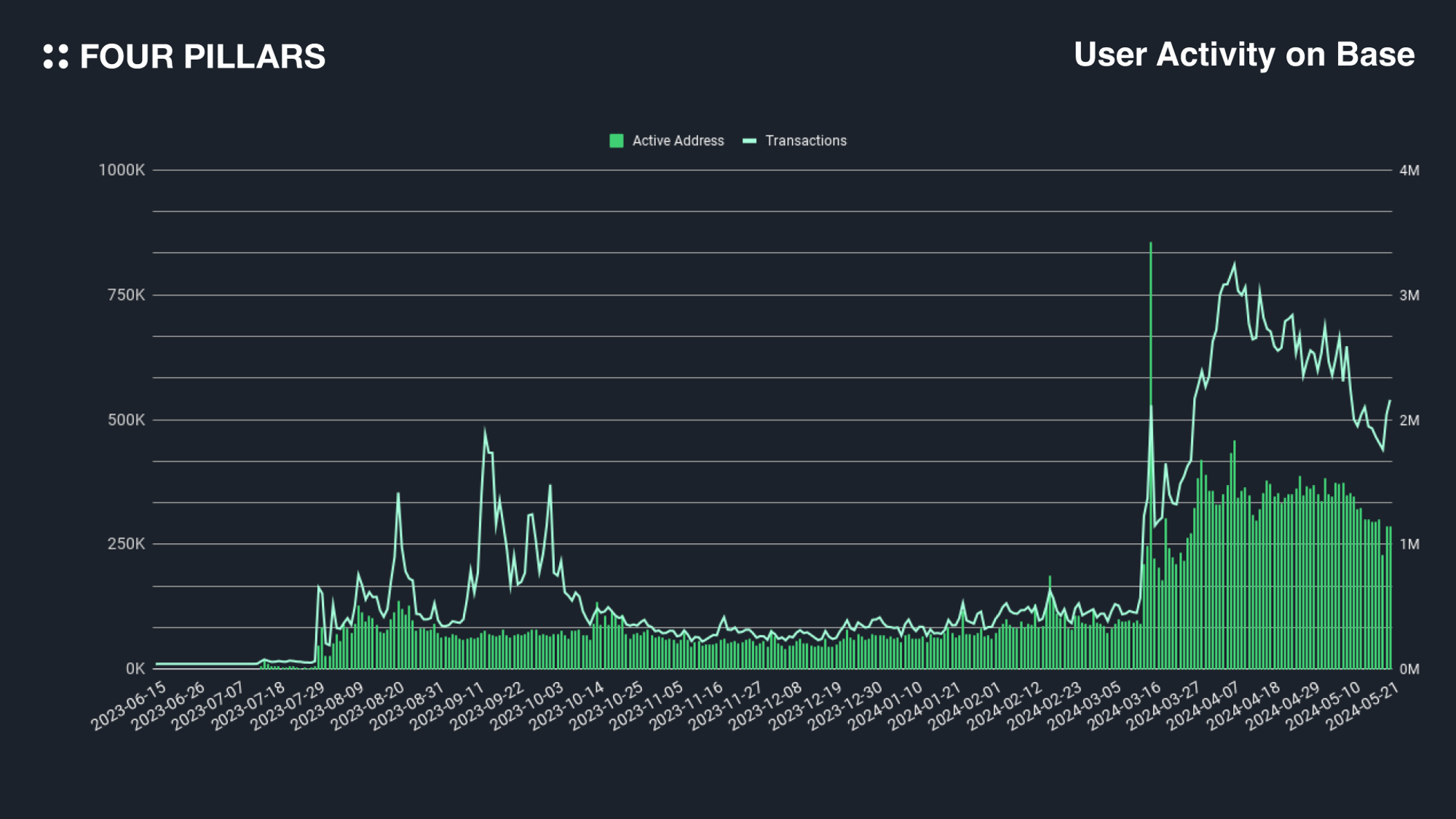
Despite being less than a year since the mainnet launch, Base's growth and presence have been notably impressive. Increase in user activity on Base is caused by multiple factors including reduced transaction fee via implementation of EIP-4844, memecoin frenzy and growth in Farcaster community. Since the beginning of the year, the number of transactions on the Base chain has increased ninefold, and the number of users has quadrupled. While Base benefits from the recognized brand of Coinbase and its capable team, these factors alone do not fully explain Base’s success. Similarly, technological superiority or the platform's unique features are not sufficient reasons for Base's achievements. Currently, Base is a Layer 2 blockchain built with the OP Stack and is being developed in collaboration with OP Labs, making its functionalities essentially identical to Optimism or other OP Stack fork projects.
The onchain applications within the Base ecosystem also distinctly stand out from those on other chains. Unlike other projects that were predominantly DeFi-realted especially at launch, Base's ecosystem primarily revolves around social networks centered on Farcaster and applications aimed at retail consumers. What factors have contributed to Base’s unprecedented success into a prominent brand and one of the most active Layer 2 blockchains? We explores the story behind Base’s growth and its vision for the future of onchain applications in this article.
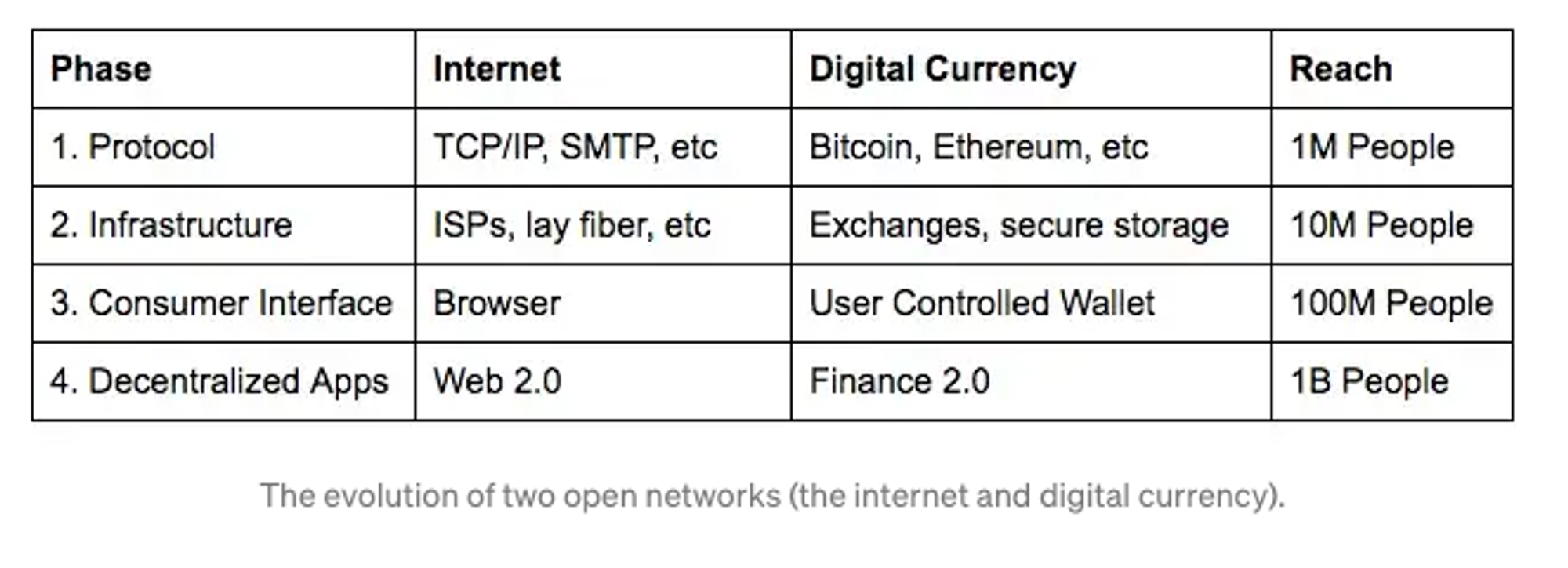
Source: The Coinbase Secret Master Plan
The vision that Base aims to achieve is very similar to that of Coinbase. Back in 2016, while the concept of onchain products still nearly exist, Coinbase had outlined their blog post a vision of an open economic system powered by crypto, and a milestone of onboarding 1 billion users onto the blockchain. At that time, the market was in Phase 2, or the "Single-player mode" phase, and the current market is now in the third stage of wallet activation and app development.
Base was born out of the question of what is needed to bring more users into the crypto industry to propel it to the next stage. According to Jesse Pollak, the creator of Base, they initially did not consider building a chain. Prior to the creation of the current Base, they had gone through several internal iterations to build real-world, user-facing onchain services. Over a full year operation, they experimented with 4 different services, including an onchain app marketplace and user identity services (the precursor to cb.id). While they experienced small successes, the impact was far from sufficient. However, through this process, they realized that the underlying infrastructure and toolkit for building onchain services was still poorly served.
This realization of the poor foundation and lack of user-friendly services led to the genesis of the current Base project as a solution. The three main goals that Base aims to achieve by launching their Layer 2 are:
Improving user access to onchain services: Currently, the barrier for average users to directly utilize on-chain services in the crypto ecosystem is still very high. Base aims to solve this problem and provide users with an easier path to access on-chain services through their platform.
Establishing a foundation to support developers: The current frameworks and tools for building on-chain services are much more limited compared to the Web 2 service development environment. Base goes beyond just providing a Layer 2 blockchain, and is layering on various developer tools to make on-chain development more accessible. This allows developers to more conveniently participate in the Base ecosystem.
Expanding Coinbase's onchain service offerings: Coinbase's investment in Base allows them to actively support the expansion of the platform that Base is built on. This enables the Coinbase team to more stably construct new on-chain services and grow their product base.
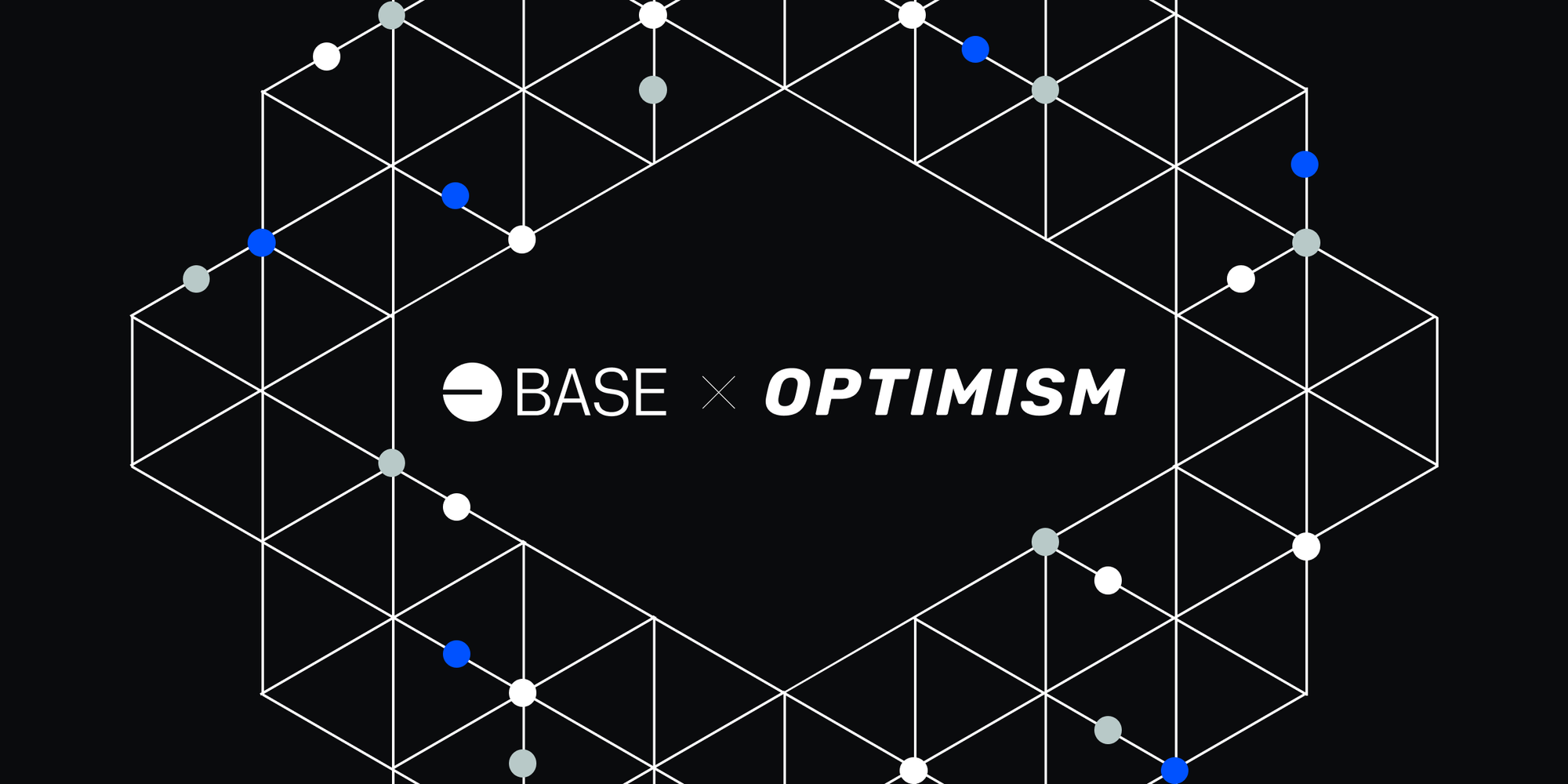
Source: Decentralizing Base with the OP Stack and Optimism
Base is an Ethereum Layer 2 chain that utilizes the OP Stack. While some chains like the recently booming Solana have managed to build meaningful user bases and independent ecosystems, when the Base project was conceived in 2022, it was an obvous choice to provide services on top of Ethereum, which had a clear lead in terms of user and developer adoption. Also the adoption of a Layer 2 solution as their chain was also an easy decision to achieve the goals of sufficient scalability and low transaction fees. While the technical maturity of the OP Stack was a primary factor, Optimism's decentralized governance structure also played a critical role in Base's collaboration with OP Labs.
While the OP Stack was considered the most technically refined solution at the time, the decentralized governance structure of Optimism also played a crucial role in Base's decision to collaborate with OP Labs. Coinbase, despite dealing with crypto, is an organization specialized in creating typical Web 2.0 services. Naturally, they operate in a centralized manner, skilled at making quick and efficient decisions. However, their aspiration was not just to create another exchange chain but to provide a foundation that many users and developers could safely trust. For them, decentralization was more than just a catch phrase.
“Coinbase is going to gradually transition into a role where we’re a contributor to Base, we provide services and products that are built on top of Base, and we are not the decision maker for everything in the Base network—that’s being done through more decentralized governance” - Jesse Pollak, Creator of Base
Source: Coinbase Is Building Its Own Ethereum Layer-2 Network Called 'Base', Decrypt
Optimism has long been dedicated to decentralizing not only their rollup framework but also the governance of their chain, an effort that provided an organizational culture and operational foundation which Coinbase lacked. Currently, both Coinbase and the Optimism Foundation equally share the authority to upgrade the Base chain's mainnet bridge and to submit fraud proofs in the system's dispute resolution. While it's unlikely, should Coinbase attempt to alter the rollup chain maliciously, there's also a possibility that Coinbase could lose its governance rights over the Base chain. Base should be seen not merely as a customer for a rollup chain solution or in an abstract partnership but as actively co-developing and participating in operations with the Optimism Foundation. The recent update of EIP-4844, supported by Coinbase and OP Labs, and the development of the op-geth client for OP Stack-based chains, demonstrate their ongoing research and collaboration with OP Labs beyond chain building and governance participation.
From its inception, Base has consistently targeted builders and content creators as their primary customers, delivering the same message throughout. Coinbase has a history of conducting impressive marketing campaigns that focus more on value delivery than on the product itself, such as Update the System and Stand with Crypto. Base has effectively incorporated the brand and DNA of the existing Coinbase into this new project and actively utilized it in their marketing.
Starting with the announcement of the Base mainnet at Onchain Summer, to collaborations like Build on Base with Prop House, Superhack with Optimism and ETH Denver, and Base, Introduced NFT published by Zora, Base has been building its unique brand and image from the beginning. Despite most campaigns occurring before the launch of the Base mainnet in August, they were sufficient in building market anticipation and delivering their intended message. Notably, the Onchain Summer campaign was particularly successful, with over 700,000 NFTs minted.
Even after the launch of the Base mainnet, they have continued to run various campaigns for builders and developers. Currently, Base operates campaigns such as the Base Grant program, which provides capital to builders for their services, and the Base Bootcamp, designed to assist developers with Web3 onboarding. In addition, they provide foundations like OnchainKit and Base Camp, offering libraries or tutorials needed for developers and builders to create services. Collaboration with content or service creators is also ongoing. Through the Mint A Penny project, they introduced a token-based commerce experience for the first time, and the recent short film "Delivery at Dawn," released in conjunction with the EIP-4844 upgrade, has garnered significant interest.
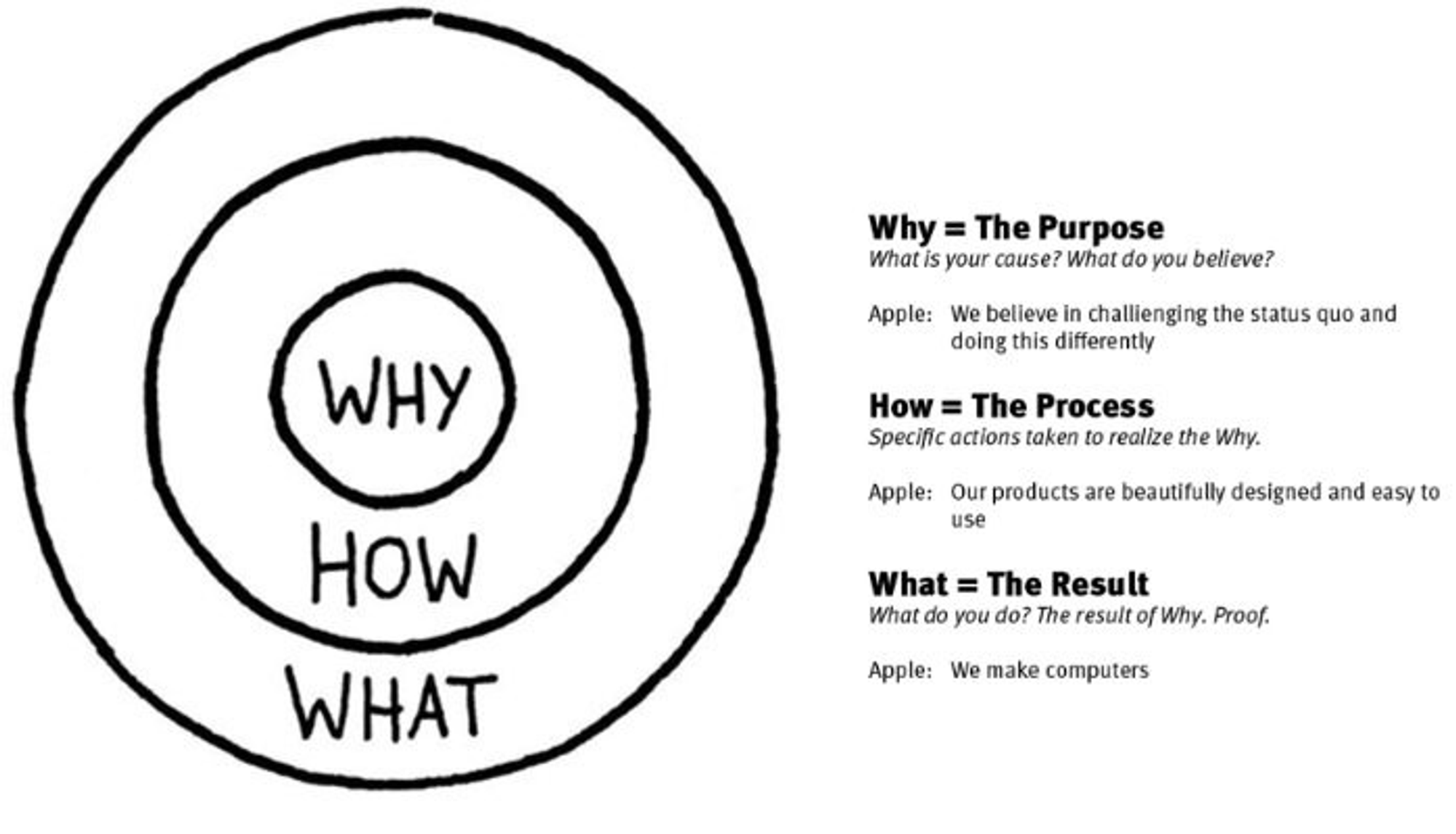
Source: The Golden Circle
Base's approach is a vivid embodiment of the concept of Golden Circle, starting with a compelling "Why" that forms the heart of its operations. The foundational purpose of Base is to democratize blockchain technology, making it accessible and usable for builders and creators. This purpose drives every aspect of what they do, aiming to inspire innovation and participation within the crypto community. It's not just about providing a platform; it's about fostering an ecosystem where the intrinsic desire to create and innovate is fully supported and encouraged. It is worth remind that the Base didn't begin with creating a blockchain. Base is an embodiment of their goals and mission, establishing itself not only as one of rollups with large volume and TVL, but also as a pioneering brand in the crypto that builders and creators look up to.
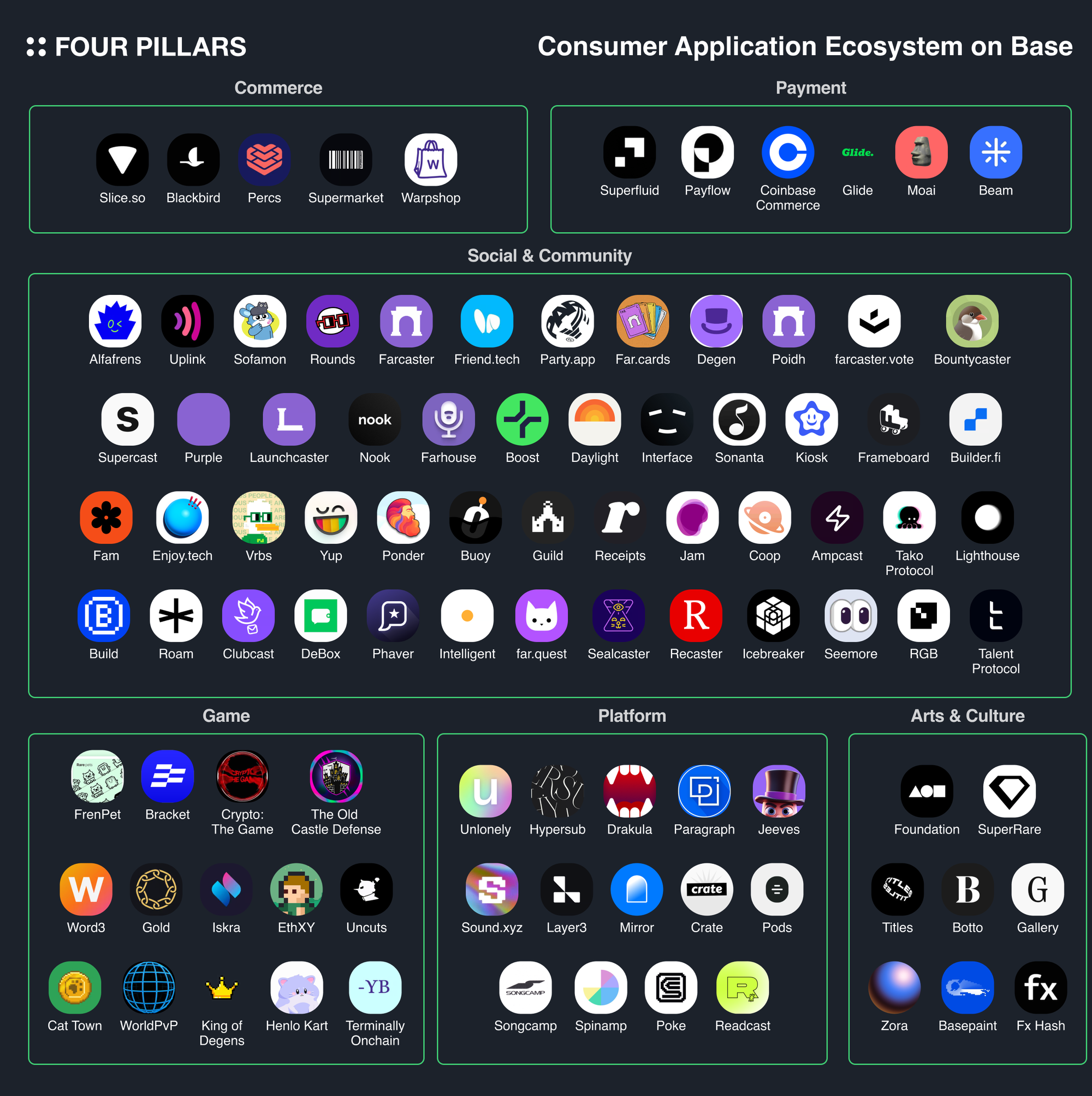
Despite being less than a year since the mainnet launch, the Base ecosystem is rapidly establishing itself as a hub for consumer applications. Unlike other blockchain ecosystems focused primarily on DeFi and infrastructure, Base supports a variety of applications across social media, content, gaming, and commerce. These applications are actively being developed and operated, offering users unique and engaging experiences that are quite exotic compared to both Web2 and Web3. The diversity of the Base ecosystem is not merely a testament to the success of a single rollup project; it serves as a practical demonstration of how on-chain applications can become services that more users incorporate into their daily lives.
This chapter highlights promising projects within the Base ecosystem's consumer applications, categorized into social and community, content platforms, gaming, and commerce. Considering the classification applied to other blockchain ecosystem, the fact that the categories of onchain applications on Base are not significantly different from those in Web2 underscores the unique characteristics of Base. Additionally, there are many large and small projects continuously emerging and evolving within the Base ecosystem which is not included in this article. For readers interested in delving deeper into on-chain applications in the Base ecosystem, a database of projects is provided below.
Social and community applications are the core sectors driving the growth of the Base and Farcaster ecosystems within the realm of consumer applications. These social and community applications are essential for bootstrapping early users on the mainnet, and they create demand for ongoing user interactions and transactions. Notably, applications like Friend tech and Farcaster on Base have recorded unexpected success significantly impacting early user inflow.
Following the launch of the Base mainnet last year, Friend tech pioneered a new category called SocialFi. Advent of SocialFi led to the creation of massive applications that have surpassed the revenues of L1 and L2 protocols, such as Fantasy.top of Blast and Pump.fun of Solana. Besides SocialFi, applications focused on user interactions, similar to traditional Web2 social apps, are also showing high growth in their user base and transactions. A prime example is Farcaster, which focuses on providing features necessary for stable and continuous community activities without direct trading functionalities. The growth in the social and community sector significantly differentiates onchain social applications from traditional social network services through several key characteristics:
1. Interoperability between onchain applications:
Seamless interoperability between onchain applications provides a unique user experience compared to traditional applications in Web2. Applications built on blockchain or Farcaster protocols share user data and social graphs, offering an interconnected experience across multiple services. For instance, users might alternate between different Farcaster clients or see comments made on Paragraph appear directly in Farcaster client or vice versa.
The openness of data and networks work as a kind of leverage for onchain applications to overcome entry barriers due to network effects and allows for various experiments to occur. Unlike the Web2 environment, where user data and social graphs are strictly separated, applications developed on open protocols like Farcaster can transplant existing social graphs to overcome bootstrapping challenges, focusing solely on user experience and functionalities.
2. Memecoin as Go-To-Market(GTM) strategies:
Memecoins have recently attracted significant attention due to their high volatility and unusual increases in price. Despite criticisms regarding their value and morality, they clearly represent an effective GTM strategy for applications, particularly social applications aiming to attract initial users and promote their services. In the Base ecosystem, for example, memecoins such as DEGEN token have incentivized Farcaster users’ community activities. Other effective GTM examples include BUILD token launched by the onchain identity platform Talent Protocol and Onchain token by the onchain community platform Guild.
3. Gamified social networking and incentives:
Harnessing incentives with tokens for onchain applications is crucial and has evolved significantly within Web3. Unlike previous approaches that rewarded all users uniformly, recent innovations have introduced more complex mechanisms. For instance, Blur initiated a points and leaderboard system that was further developed by Blast, while social applications and tokens on Base has adopted token distribution strategies rooted in community contribution and game theory. These developments encourage users to compete and collaborate, formulating strategies that maximize their economic benefits. During this process, applications subtly promote community engagement and desired behaviors, seamlessly integrating their services into user interactions.
3.1.1 Major Projects
1) Farcaster
Farcaster is a sufficiently decentralized social network protocol, established in 2020 by former Coinbase employees Dan Romero and Varun Srinivasan. Decentralization here means that any two users within the network can interact without needing approval from others. Farcaster operates as a protocol, composed of smart contracts on the Optimism network, storing user accounts, posts(Casts) and reactions.
One of the distinguishing features of Farcaster, setting it apart from traditional Web 2 social networks, is its approach as an open protocol. While platforms like X and Facebook maintain a one-to-one relationship between the protocol and the client, prohibiting unauthorized third-party clients, Farcaster embraces a different approach. It allows anyone to develop their own client that can connect to its protocol, enabling them to read and write data freely without operator approval. In this context, a client means the user interface for posting Casts or browsing feeds.
Currently, Warpcast is the most popular client on Farcaster and the only client that is developed and managed by the Farcaster team themselves. Other third-party clients such as Supercast, Nook, Jam, and Ampcast are also available, each providing unique user experiences or tailored features. This open protocol model encourages innovation, allowing for continuous experimentation and development, unlike Web2 services which centralize and control user data and social interactions on their siloed environment.
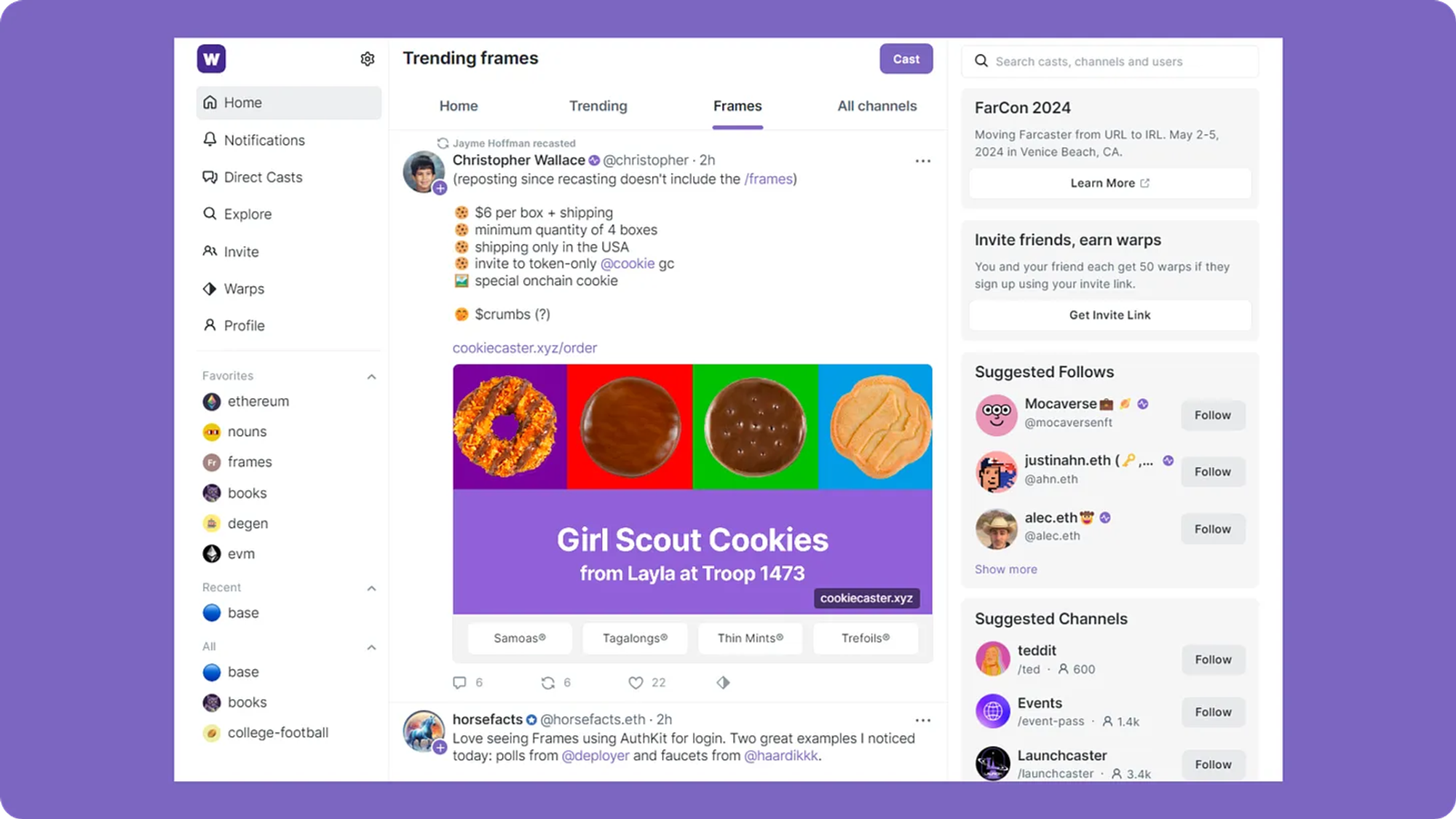
Source: Farcaster Frames: A Crypto Game Changer
The rapid surge in Farcaster's user base this year can largely be attributed to the launch of the Frame feature. Frame allows users to run applications capable of simple interactions within a Cast. The feature has garnered significant attention from the community and opinion leaders, primarily because it exemplifies the core values of openness and compatibility that are central to the crypto space. Essentially, Frame is just a simple interactive button within a Cast, but its implications is more than that. Frame examplifies a foundation for various experiments to take place over the established network's social graph and protocol. Initially, Frames with experimental features, such as those running the Doom or selling Girl Scout cookies, drew attention from the community. Currently, the feature is predominantly used for enhance user engagement including NFT minting, simple games, dashboard or instruction bots.
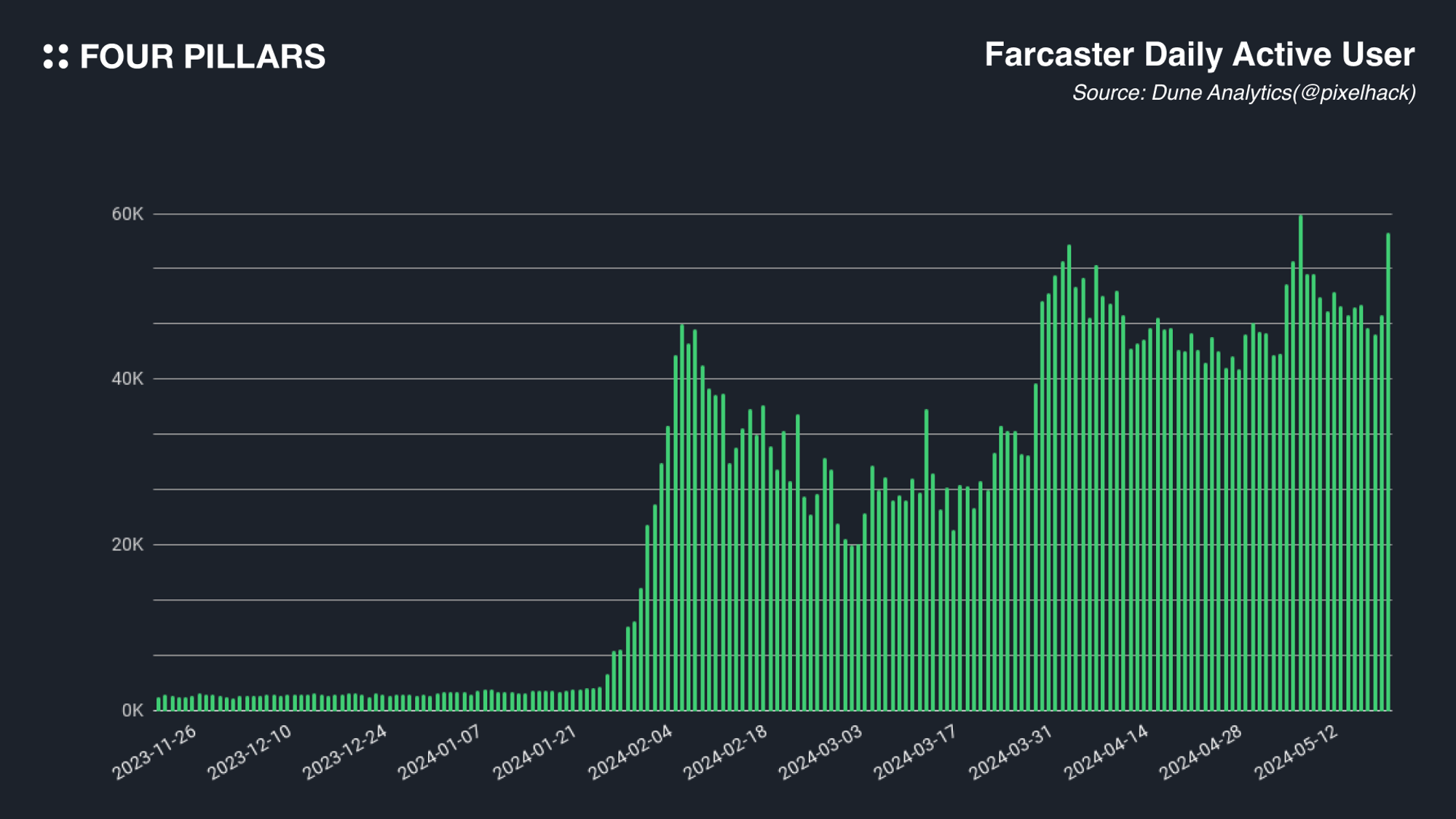
In addition to the introduction of the Frame feature, several factors have positively impacted Farcaster's growth, including a favorable market environment, the expansion of the Base ecosystem, and the memecoin frenzy. Having moved beyond the bootstrapping phase, Farcaster has established itself as one of the most active and critical networks within the Base ecosystem. Many new projects launched on Base are choosing to build their community and user base on Farcaster rather than X. Even with a relatively modest number of users, the community on Farcaster is highly active, primarily due a high density of influencers, creators and builders. As the Base ecosystem grows and integrates more consumer applications, it is anticipated that Farcaster's network will continue to expand and develop further.
2) Degen
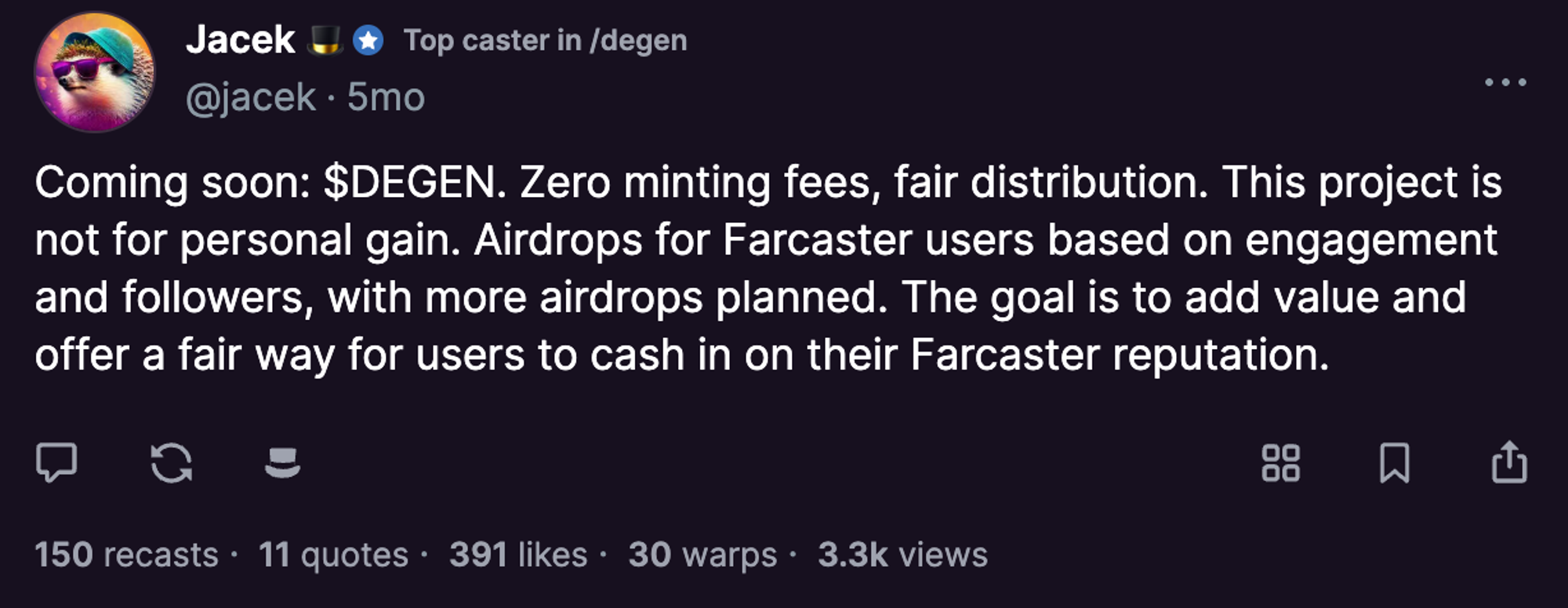
Source: Farcaster(@jacek)
Degen, an ERC-20 token on Base, plays a central role in Farcaster's community and ecosystem. It has greatly benefited from and, at the same time, contributed to the growth of the Farcaster network. Degen project was designed to incentivize community engagement and content creation within Farcaster. Users can tip others for their posts, within allowance limits determined by their community activity rankings. Since its launch, Degen has been highly recognized by the community, acting as a de facto currency for various projects within Farcaster and even leading to the launch of its own Layer 3 chain to expand its influence.
While the launch of Degen might have seemed like just another experimental token, its impact goes beyond the typical price surges seen with memecoins. It has profoundly influenced the Farcaster ecosystem, enhancing the platform’s overall activity by fostering more content creation and user interaction. It leads to an influx of builders, creators, and influencers, forming a vibrant community in Farcaster. Since the success of Degen, similar to the point system popularized by Blur's launch on Ethereum, community-based tipping has become a strategic playbook for many projects and applications to drive user interaction and network growth.
Moreover, it is noteworthy that the contribution of third-party tokens like Degen to the significant growth of the tokenless Farcaster protocol. While previously most of protocols primarily used their own tokens to motivate user acquisition, this often led to great escape of users with shallow loyalty when price drops. However, by integrating or using an external memecoin as a core feature or base currency, applications can attract new users while isolating the app's utility from price volatility. Adopting Degen token as a base currency has popularized by applications like the short content platform Drakula, the prediction market game Perl, and the sports betting game Bracket. The GTM strategy with the help of memecoin and speculations is expected to become more popular and refined, minimizing the risks associated with launching proprietary tokens, while still incentivizing user engagement and actions.
3) Friend Tech
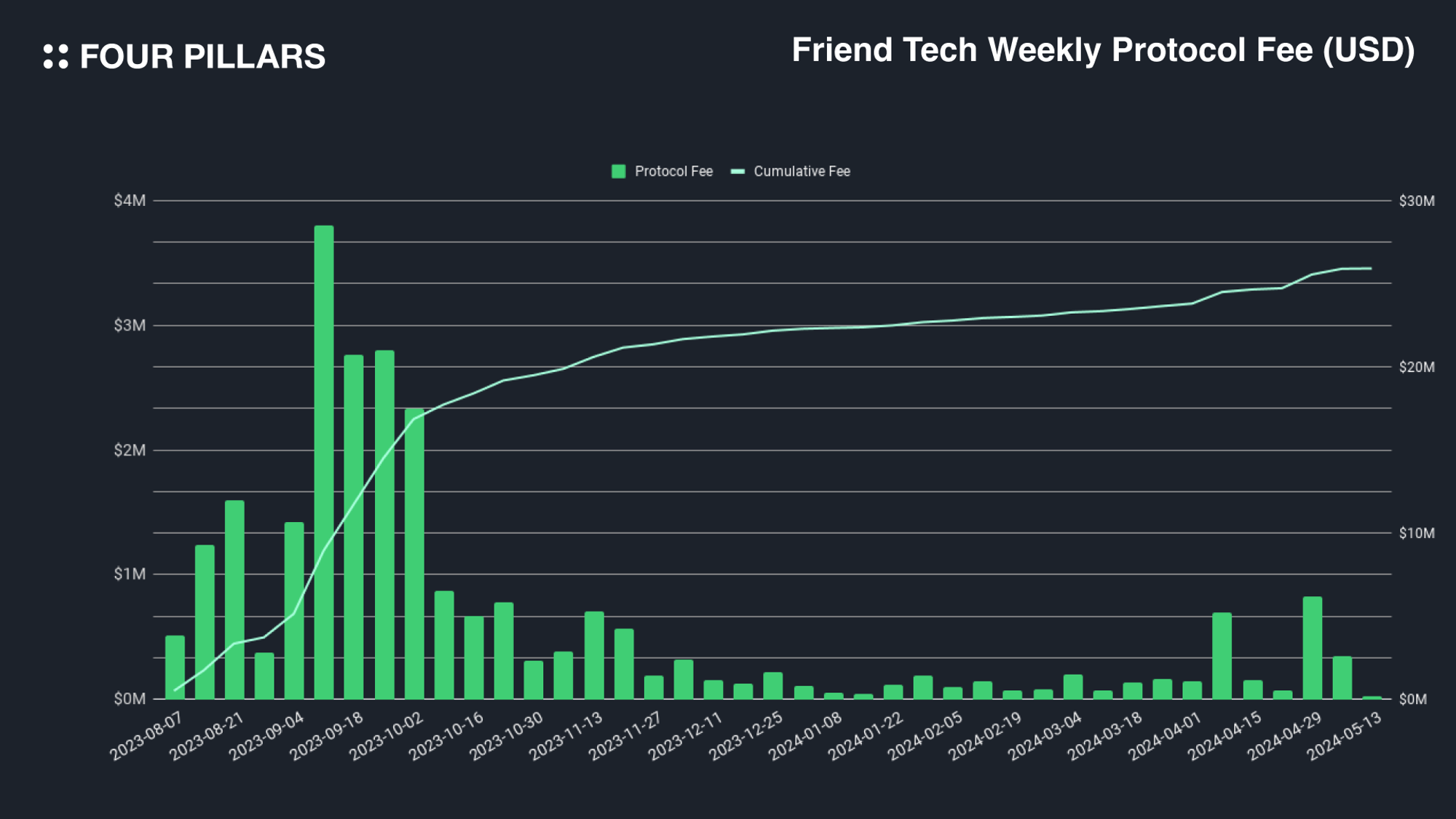
Friend Tech, a social trading application, launched alongside the Base mainnet debut in August last year. It allows users to buy and sell 'Keys' (shares) from each other to join private group chat. Users also can make profit from trading the keys or taking fees from their keys being traded by other users.
Since its launch, Friend Tech has faced controversies and mixed market reactions. Nonetheless, it pioneered the new SocialFi genre, previously dominated by DeFi and NFTs. Strategic moves like integrating Twitter with embedded wallets, securing support from investor Paradigm, and using invitation-only access boosted its profile quickly. Just two weeks post-launch, Friend Tech attracted 100,000 users and generated $3 million in fees, significantly aiding the early growth of the Base mainnet.
Despite innovative strategies, low quality of the app and Ponzi-like tokenomics led to quick success followed by significant losses of its user and fund. Friend Tech has recently launched a second version with a token airdrop, aiming to regain its initial popularity. The second version of app limits transfers of FRIEND token, and allows trading solely on its proprietary DEX, quite deviating from standard practices. However, it seems that still most of user base focus on merely speculation and airdrops, which makes the platform's resurrection remain uncertain. Regardless of the outcome, Friend Tech's role in pioneering a new genre within SocialFi and consumer applications, and its continued efforts to break from traditional approaches, will likely remain as a valuable case study.
3.1.2 Notable Projects
1) AlfaFrens

Source: AlfaFrens
AlfaFrens is a SocialFi app built on Farcaster, similar to Friend Tech, where its standout feature is allowing users to subscribe to specific influencers for access to exclusive chat rooms. When a user subscribes to an influencer on AlfaFrens, their assets decrease in real-time, correlating with the subscription fee. The platform employs Degen as its primary currency, fostering active engagement across the Farcaster community.
A distinctive characteristic of AlfaFrens is its focus on subscription-based interactions. Developed by Superfluid, a startup that facilitates on-chain asset streaming, AlfaFrens has carved out a niche in the predominantly retail-driven crypto market. Their strategy leverages minimalist features and meme coins to stimulate speculative interest, effectively attracting new users and enhancing visibility of their brand and product.
2) Interface

Source: Interface
Interface is a social platform that displays wallet activities in a feed format. Users can follow wallets registered via ENS or address, allowing them to view real-time actions such as contract calls, token purchases, and NFT minting on-chain. Especially, with the growth of the Farcaster-linked social graph, it's now easier to follow connected accounts, greatly improving utility of the app. The growth of social activity and content platforms in areas like art and music is expected to further increase the enjoyment and value of the on-chain social graphs that Interface offers.
Interface stands out with its sleek experience and decent design of the app. This makes Interface’s offering particularly notable, especially when regarding that most of Web3 products still offer poor user experiences. As consumer apps gain importance, excellence in user experiences have shifted from optional to essential. For example, OKX Wallet has become popular for its outstanding user experience and multi-chain capabilities. Currently, wallet apps serve as the main gateway for users’ onchain activities. However, apps with strong social features is expected to be able to become the next super apps in crypto. With more onchain browser apps focusing on social functions emerging, it is worth monitoring the adoption of platforms like Interface and their alternatives.
3) Kiosk
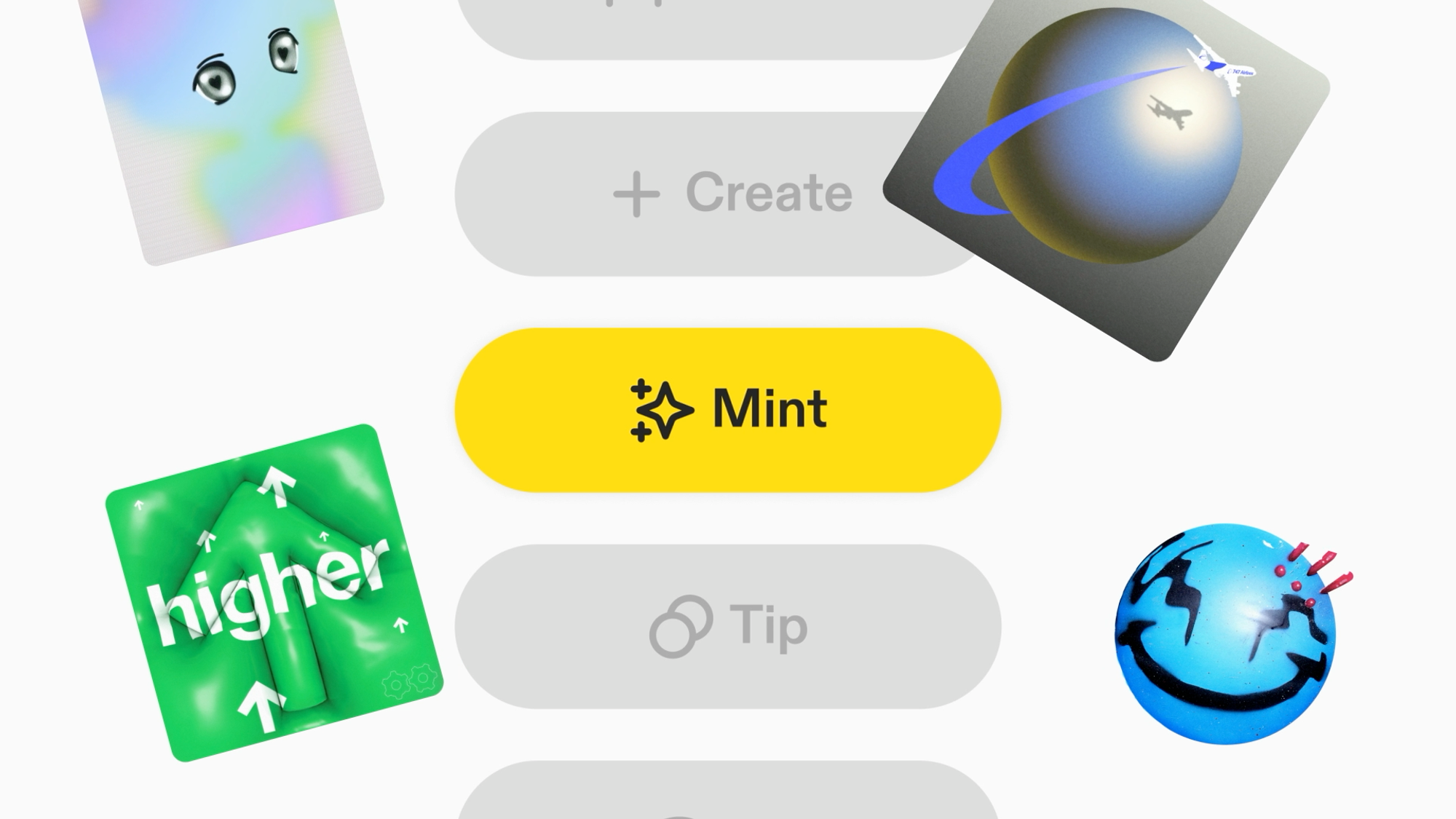
Source: Introducing Kiosk
Kiosk is a new Farcaster client that combines onchain social networking combined with commerce. It was developed by the team previously behind Mirror, an onchain content platform sold to Paragraph. Before its launch, Kiosk attracted $10 million in investment from firms like Electric Capital and A16Z, creating significant buzz.
Kiosk plans to offer advanced features beyond those of standard social media. Users will be able to easily convert images into NFTs with a click or buy assets created or collected by friends directly from their feed. Moreover, Kiosk will support creators in forming communities and sharing content. Creators and influencers can establish communities with members who share similar interests, through token-gated or subscription channels.
In the Base ecosystem, applications in the social and community sector are currently the most active, offering interfaces and interactions similar to those of Web2 platforms like Facebook or X. Given the historical evolution of the internet and platforms in Web2, the growth in onchain social graphs and community activities suggests the potential emergence of new content platforms. The spread of the internet and mobile devices in Web2 facilitated the expansion of social networks like Facebook and Twitter, which subsequently led to the creation of specialized content services such as Instagram, YouTube, Twitch, and TikTok.
The onchain application ecosystem in Base is currently experiencing the emergence of various content platforms centered around Farcaster, where community activities are concentrated. As the user base and activities onchain gradually increase, demand for platforms tailored to different content types is also expected to rise. Currently, applications with a focus on short texts and photos in a social feed format are most common. However, applications optimized for different content types such as essays, videos, and live streaming are also emerging, and expansion of both user demand and service supply seems likely to happen in the near future.
Compared to similar services in Web2, on-chain content platforms are characterized by 1) seamless interoperability between applications, 2) token-based interactions, and 3) rewards especially for creators and influencers. Like applications in the social and community sectors, onchain content platforms provide a seamlessly connected user experience across multiple applications based on shared protocols like Farcaster. Second, most applications use tokens as a key means of interaction, which is never limited to mere swap transactions. Content created by creators can be minted as NFTs for ownership, exclusive communities can be formed around specific tokens, and tokens can also be used to favor and offer priority to loyal users. Finally, creators can also use tokens to gain strong economic incentives and interact more actively with their fans or community. Creators and influencers publish their content onchain, allowing people to mint it or use it to form their community.
3.2.1 Major Projects
1) Unlonely
Unlonely is an onchain live streaming platform on Base, blending Web2 and Web3 elements to create a seamless user experience. The platform has recently attracted investments from notable firms like Multicoin Capital and Coinbase Ventures, boosting expectations for new consumer-focused applications. Unlonely stands out by incorporating gamified onchain features into its live streaming service. Viewers can watch streams without needing to connect a wallet or log in, similar to traditional platforms. However, Unlonely enhances viewer engagement by integrating various onchain functionalities that allow for interaction between streamers and their audience. One notable feature is the ability for streamers to create temporary tokens that can be traded only if they hit a target price within 30 minutes. Following this feature's introduction, Unlonely’s founder, Brian Guan, successfully generated $160k in trading volume and $6k in creator fees in just one stream. Moreover, the platform enables viewers to interact more deeply by participating in betting, engaging in private chats, and using Unlonely’s native token, to enrich the streaming experience.

Source: Bringing Love Onchain with Unlonely
In February, Unlonely hosted an innovative event called "Love On Leverage," which played a significant role in promoting both the platform and its distinctive onchain user experience. This engaging dating show allowed male and female participants to meet online. As they interacted, viewers had the opportunity to place bets on whether the couple would go on a second date. If the total amount wagered in favor exceeded a predetermined threshold, the couple would proceed to an actual date. Conversely, if bets against the couple dominated, new participants were introduced. This creative and interactive event was a hit, drawing over 10,000 views, generating more than $20,000 in token transactions, and tripling Unlonely's social media following.
2) Paragraph
Paragraph is an onchain newsletter and publishing platform that enables content creators to mint their written work as NFTs, distribute newsletters directly to wallet addresses, or generate revenue through subscriptions. Beyond typical content platform features, Paragraph integrates with social protocols like Farcaster, Lens, and XMTP to offer token-based channel creation. This integration helps individuals and brands build communities and enhance user interactions within the Web3 space. Recently, Paragraph solidified its position as a nearly singular player in the on-chain publishing market by securing a $5 million investment from Union Square and Coinbase Ventures and acquiring its competitor, Mirror.
While minting articles themselves rarely hold direct economic value, they serve as a means of verification to increase community engagement and distinguish initial contributors to creators or brands. This functionality is increasingly being adopted within on-chain social communities. Particularly with the recent launch of Farcaster's Frame feature, which allows articles to be read and minted within the core community, adoption is becoming more active. However, the platform still have not succeeded on drawing meaningful user participation yet. Including the contents published on Mirror, the number of minted content pieces per week ranges between 10,000 to 20,000. But as the onchain activities and social graph are exptected expand much more, onchain publishing can be deemed more attractive, especially among products and brands aiming to invigorate Web3-based communities.
3.1.2 Notable Projects
1) Drakula
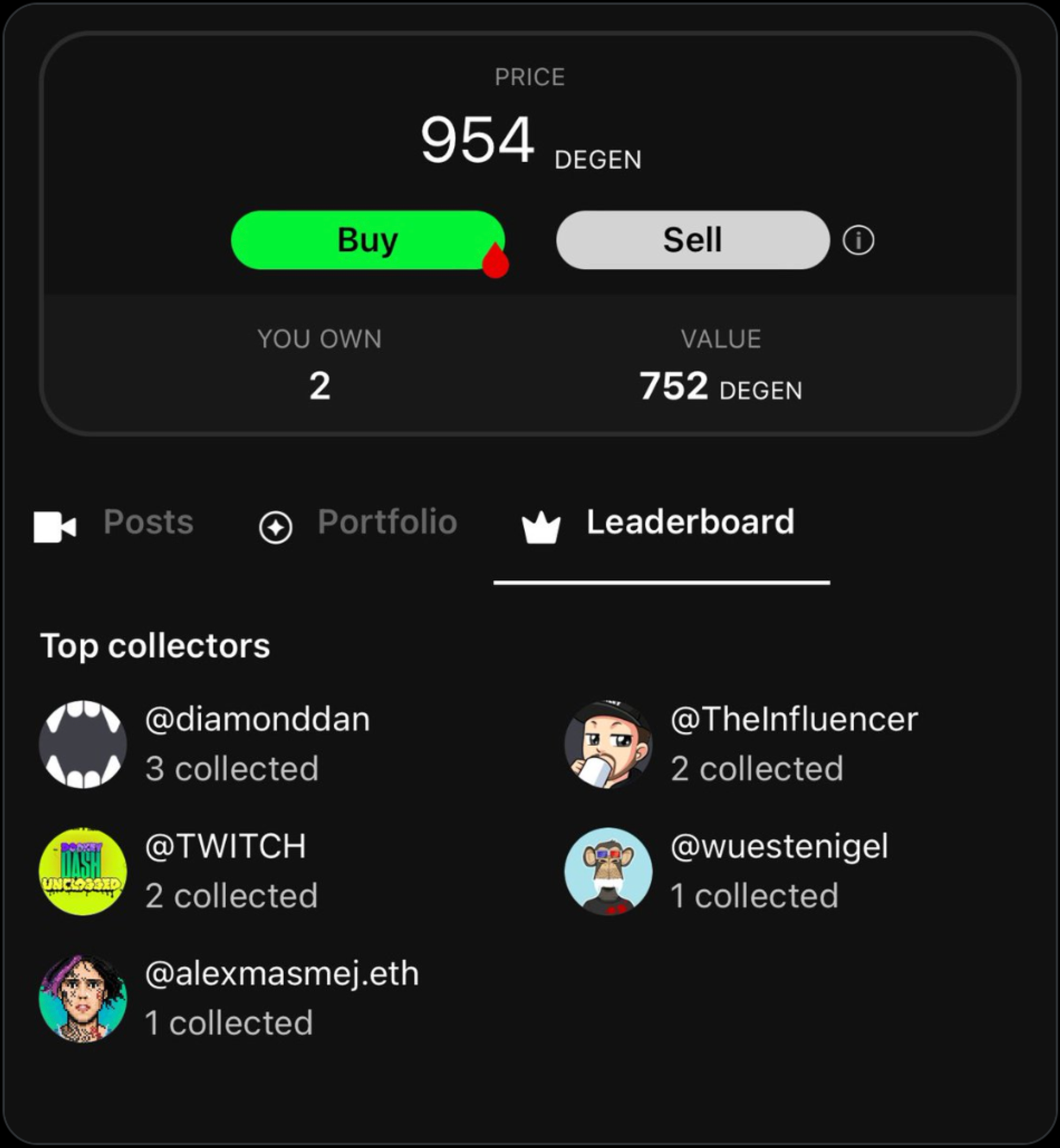
Source: drakula.app
Drakula is an on-chain shorts platform that mirrors the functionality of TikTok. Like Friend Tech, Drakula allows users to trade content creators' tokens, from which creators can earn a commission on each transaction. The platform utilizes the Degen token as its primary currency, enabling users to earn Drip, its proprietary point token, through content creation and sharing, or to give tips to creators.
Initially launched with little connection to established protocols or communities, Drakula's first iteration did not meet market expectations. However, following the rapid growth of the Farcaster and Degen communities on Base, Drakula strategically pivoted and relaunched with a second version. This update included integration with the Farcaster protocol, allowing for cross-platform uploads and aligning more closely with community interests. This pivot was successful, attracting 25,000 users and generating $10 million in trading volume. Despite these gains, the platform has recently seen a decrease in both trading volume and user engagement as speculative interest has subsided.
2) Sound.xyz
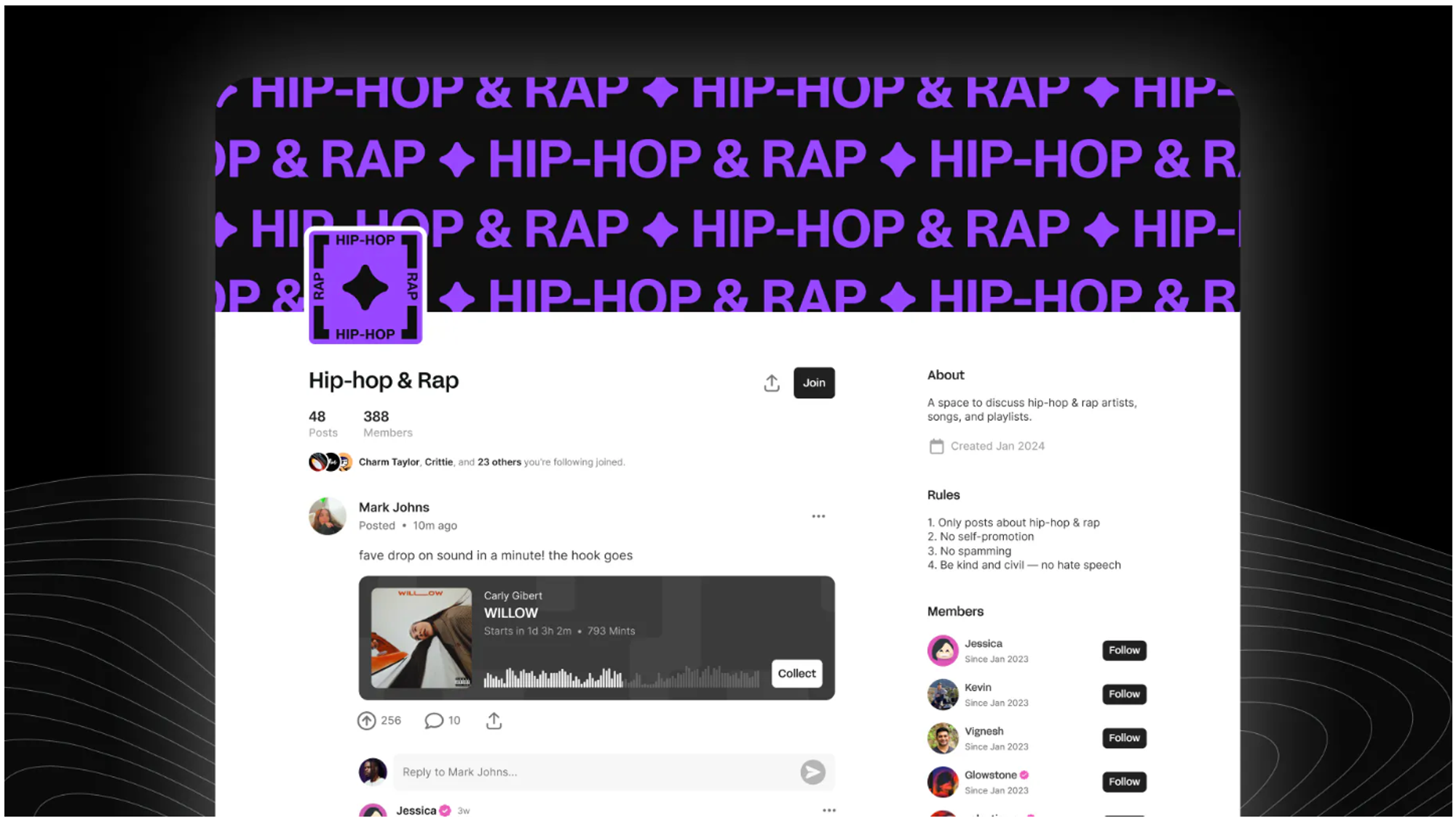
Source: Introducing Channels, Sound.xyz
Sound.xyz is a music NFT platform established in 2021, boasting a history slightly longer than that of Base. The platform has received significant backing from venture capital firm a16z, with investments of $5 million in 2021 and $20 million in 2023. Over the two years since its launch, Sound.xyz has minted 1.2 million music NFTs and paid out $6 million in creator rewards to over 2,500 artists. Notably, collaborations with Snoop Dogg and tracks released by the Optimism Collective have been among its most successful minting examples. Currently, Sound.xyz operates on both the Base and Optimism blockchains, with track data stored on IPFS.
Creators use Sound.xyz to publish their music as NFTs, allowing fans not just to listen to the tracks but also to own them, supporting artists beyond traditional means. Users can leave public comments, enhancing social interaction. Additionally, music NFTs offer exclusive perks like Discord invites or early access to unreleased tracks, fostering closer connections between artists and fans. While the adoption of on-chain music listening and minting isn't fully mainstream yet, the expansion of on-chain social networks points to a promising future for specialized content services. With the emergence of similar platforms like Crate and Songcamp recently, the potential for the new category of onchain music platforms is significant and worth watching.
Despite the long been experiments and trials, the gaming in Web3 has yet to produce as many success stories as expected. Even within the Base ecosystem, where consumer application are most actively deployed, the adoption of onchain games remains relatively rare. This slow adoption can be attributed partly to that the user base of crypto predominantly consists of investors and traders, rather than gamers.
The demand tends to focus on games with simple mechanics, token economics, and user interaction. On the other hand, traditional games that emphasize graphics and action tends to be less popular. Also, social features have become crucial within Web3 games. Functions like leaderboards, chat, and community building enable players to compete or collaborate within their community. These features help players to continue interactions outside the game and strategize effectively.
Meanwhile, projects similar to traditional games are also starting to appear within the Base ecosystem. A prime example is Iskra, which recently announced the launch of an L3 chain on Base. Given the game's focus on optimizing user experience over concerns about security and centralization, L3 that provides low transaction costs, fast processing speeds, and capability of customized features could be an reasonable options.
3.3.1 Major Projects
1) FrenPet
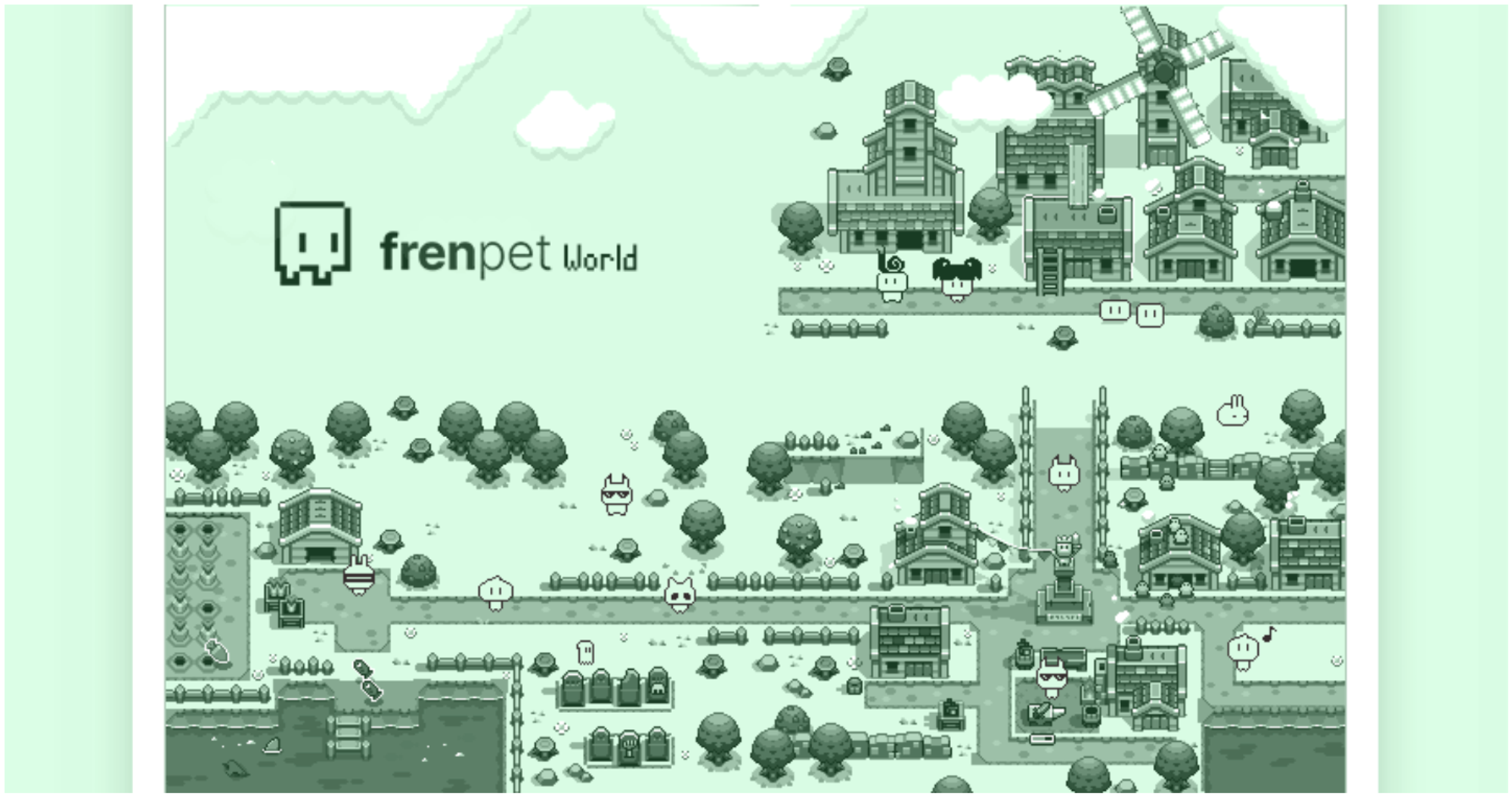
Source: Fren Pet Next Steps
FrenPet is an onchain game where players raise virtual digital pets, launched on Base last year. It quickly attracted significant interest and user growth. To date, over 20,000 wallets have registered, and the game has generated more than $3.5 million in protocol fees. The gameplay involves minting pets and nurturing their growth to earn points. FrenPet requires constant player interaction like feeding pets or engaging in pet battles, enhancing game activity.
The game's primary currency, $FP, acts as both a revenue source for the protocol and a reward for top players. A portion of every in-game item purchase is burned, and some is redistributed to leaderboard leaders. This model boosts active participation. FrenPet shares some similarities with Friend Tech, such as token burning, redistribution, and in-app swapping. However, it uses on-chain pets to encourage ongoing interaction, unlike the social elements of Friend Tech. Like Friend Tech’s first version, FrenPet's structure depends on influx of new users to maintain token value, risking a mass exit of existing users if the influx stalls. With ongoing updates to the game's mechanics and tokenomics, it is worth watching whether FrenPet could sustain its trajectory.
2) Iskra
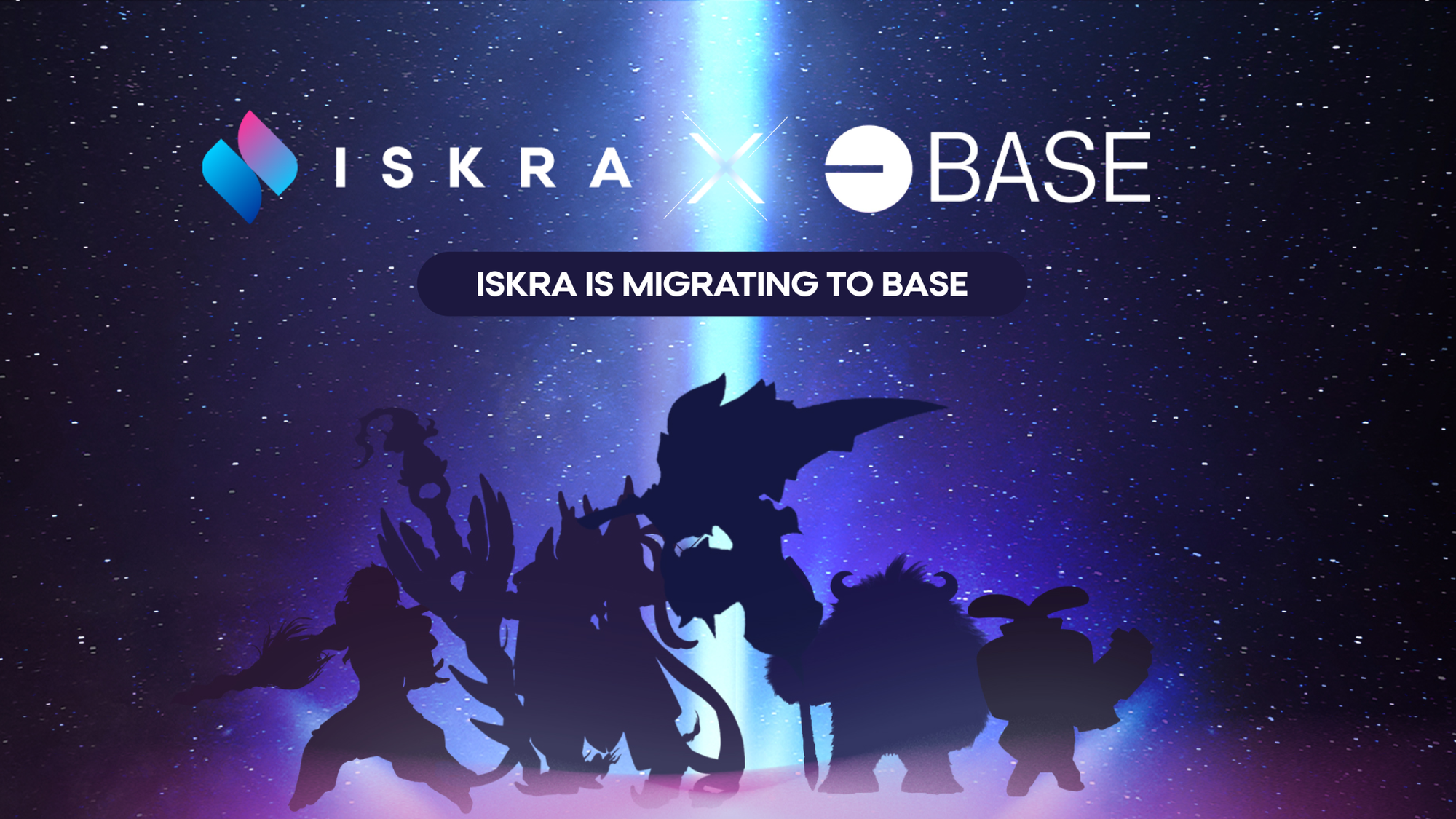
Source: Iskra Migration: Moving Iskra’s Hub Chain to Base
Iskra, launched in 2022, is a Web3 gaming platform designed for developers and gamers. It offers intuitive and casual games that are accessible even to those unfamiliar with crypto. The platform hosts six games, including the role-playing P2E game "3 Kingdoms Multiverse," the casino game "World of Win," and the cooking simulation "Norma in Metaland." Additionally, Iskra enhances user engagement with various programs such as the Quest Wall and Iskra Arcade, where players can complete quests to earn in-game rewards.
Previously operating on Klaytn and Ethereum, Iskra recently moved to Base's L3 chain, accompanied by significant updates that have raised expectations. With this transition to Base, Iskra introduced "ClashMon," a game where players collect characters and form teams for battles, offering a SocialFi-like user experience that's currently generating significant trading volume and buzz. Iskra is also preparing to launch new titles, including the casual TPS game "Juicy Adventure" and the tower defense game "Guardians of Spark." The shift to Base's L3 chain is expected to bring higher accessibility and lower costs, attracting more users and creating a positive cycle of more game projects onboarding to the platform.
3.3.2 Notable Projects
1) Uncut

Source: WTF Are Uncuts Teams and How To Consume Them?
Developed by Team REKT, Uncut is a social card trading game based on Farcaster profiles. It shares almost identical mechanics and UI with Fantasy.top of Blast. Players use the in-game currency, Degen tokens, to purchase other users' Farcaster profiles and form teams. They earn a commission each time their card is traded and receive dividends from the Degen prize pool. This prize is distributed weekly based on their team's scores.
Since its launch, Uncut has rapidly spread within the Farcaster community, achieving $200K in trading volume within just three days. Although still in its early days and lacking significant differentiators from Fantasy.top, Uncut shows promise for growth. By leveraging the open data set and social graph of the Farcaster protocol, it could enable a variety of interactive features across various apps.
Additionally, one notable aspect of Uncut’s history is its initial version being hacked by malicious users immediately after its April release. You can read more about the incident here. Despite this severe setback, the team did not halt the project. They relaunched a second version within a month, fully compensating the affected users and demonstrating resilience and a strong sense of responsibility.
2) World PvP
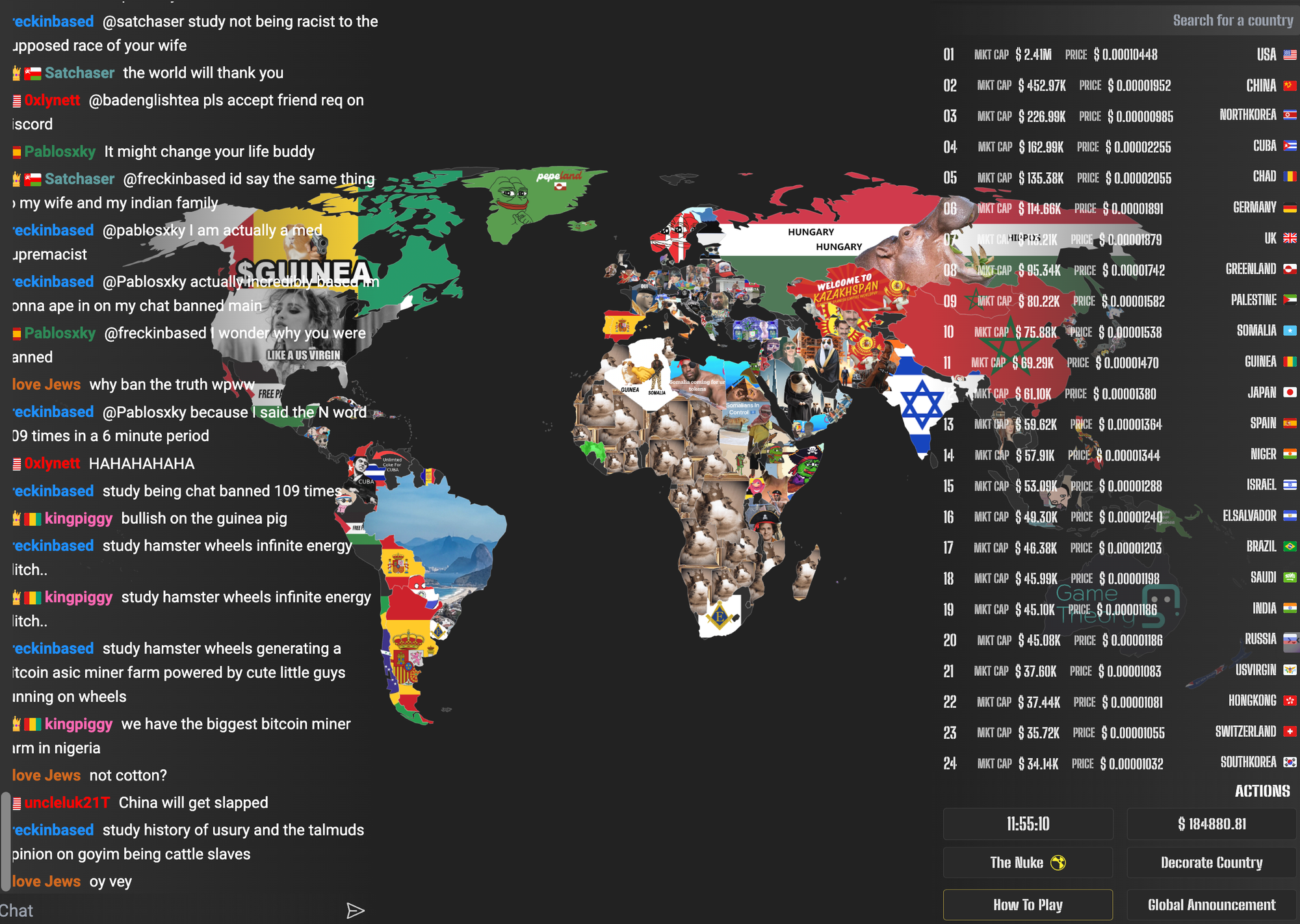
Source: World PvP
World PvP is a social trading game where 211 countries compete over seven days based on the market cap of their corresponding coins. It quickly went viral on Twitter after its launch, reaching $31M in trading volume within just five days. At the end of each seven-day round, the country with the highest market cap can unlock a nuclear missile. This missile can be used to eliminate liquidity from a target country. Half of the removed liquidity is used to repurchase the winning country's tokens, and the other half is randomly distributed to another country. The right to choose the target country is held by the user who owns the most tokens of that country. The game continuously runs rounds, and the last remaining country is declared the winner.
It is noteworthy that more and more apps are integrating social features as a core of the gameplay. A key feature of World PvP, as evident from the interface, is a chat. Each country has a chat room accessible by tokens, and there is a global chat room where all players can communicate. Players' usernames are displayed with the flag of the country they hold the most tokens in. Beyond the in-game chat, World PvP players are also highly active on external channels like Twitter and Telegram, where they engage in various strategic and political activities. This behavior highlights how even games with simple mechanisms can powerfully engage communities and incorporate social functions, as seen with other games like Fantasy.top of Blast and Pump.fun of Solana.
Among all the sectors of consumer applications in crypto, payment are the one that has clear advantage over traditional counterparts. Crypto-based payments are much cheaper and faster than the traditional financial systems. This suggests that crypto holds tremendous potential in online business and commerce, where efficient payment systems are crucial in their success. Recently, mainstream fintech companies have been rapidly adopting crypto. Shopify and Stripe have added crypto payment capabilities, and major payment gateway firms like PayPal and Visa are either issuing or preparing to issue stablecoins.
While the supply side of crypto payment systems is expanding, adoption rate on demand side remains relatively low. This is mainly due to a poorer user experience compared to traditional payment systems. Most onchain payments are accessible only to users with crypto wallets and funds. Also, the supported chains or tokens vary by platform, leading to cumbersome processes for users.
For crypto payments to be adopted to wider customers, it is crucial to focus on simplifying the user experience. This involves abstracting away the complexities of chains and tokens so that consumers can make payments effortlessly, regardless of the underlying technology. Additionally, enhancing wallet interfaces to be more user-friendly will play a pivotal role in making crypto more accessible and intuitive for everyday transactions.
Despite the challenges, crypto-based payments and commerce show great potential for growth. One of great example is a Smart Wallet developed by Coinbase. It simplifies the user experience by allowing payments with assets held at Coinbase, eliminating the need for creating wallets or backing up seed phrases. Additionally, new standards for wallet creation and verification are being proposed at the protocol level, which would smoothen user onboarding when applied. The growing number of consumer applications and social networking within the Base ecosystem could also support emerging onchain commerce. Many believe that integrating crypto into existing commerce platforms and fintech services is the only way to activate crypto-based payments and commerce. However, regarding the expanding ecosystem of consumer application and onchain social networks, a new Web3 commerce models and platforms could be derived by not the help of outside but internal innovation.
3.4.1 Major Projects
1) Coinbase Commerce
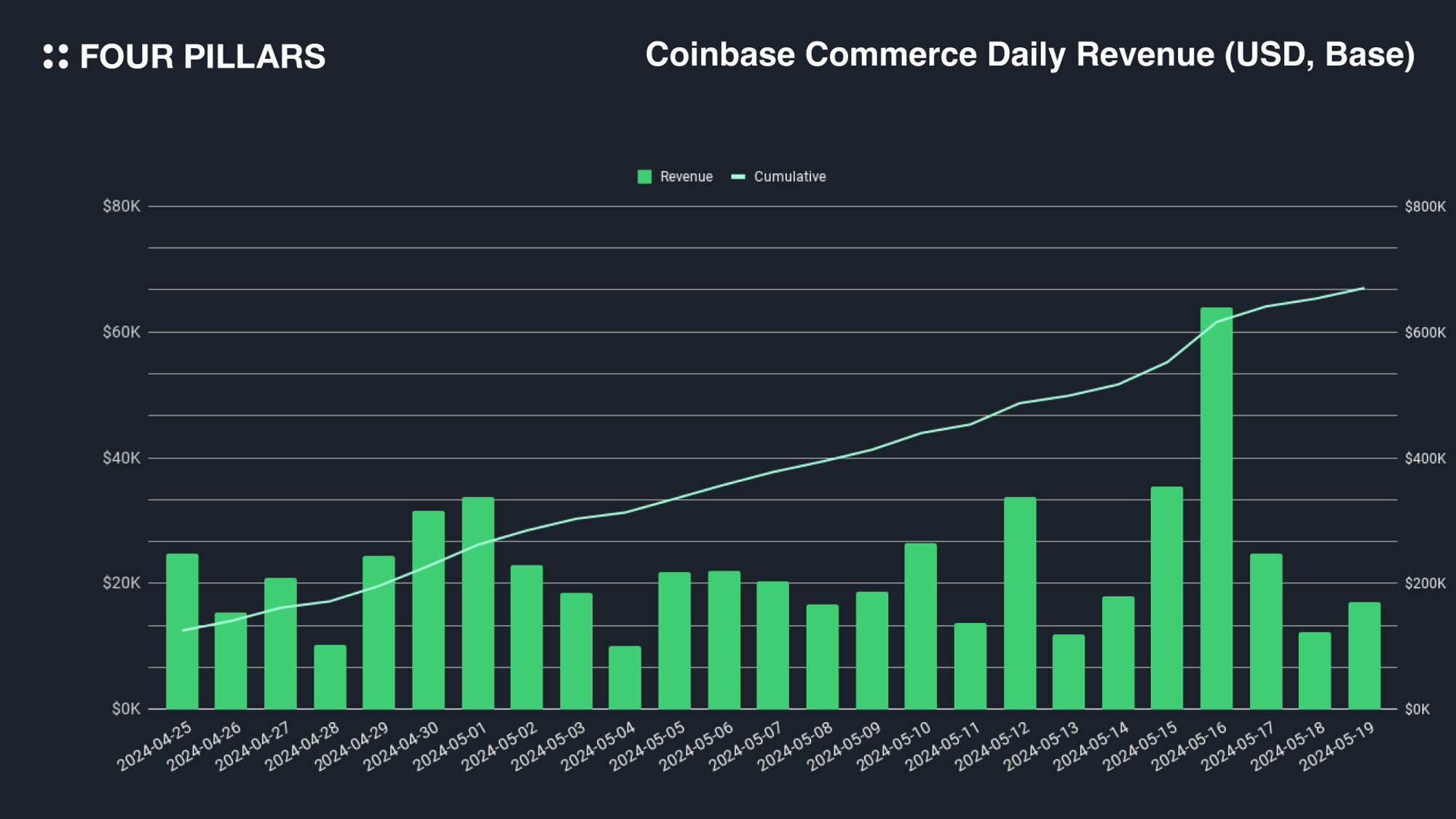
Launched in 2018, Coinbase Commerce currently operates on Ethereum, Polygon, and Base networks, serving thousands of merchants and stores worldwide. Its major corporate clients include Messari, Chain Analysis and the Chicago Bulls. Retail sellers can integrate the solution into their online stores via platforms like WooCommerce, Shopify or Primer. Despite being one of the most recognized onchain payment projects, daily transaction volume of Coinbase Commerce on the Base is around $30K, indicating that commerce adoption within crypto is still relatively low.
Recently, Coinbase Commerce open-sourced the code for its Onchain Payment Protocol. This protocol uses an Intent-based payment mechanism, allowing both buyers and sellers to pay or receive payment in their preferred tokens. Sellers can settle transactions in their chosen token, such as USDC, without worrying about token volatility. Buyers can make payments in their preferred tokens without needing to swap tokens continually. The payment fees, excluding network processing costs, are about 1%, which is cheaper than international or typical card transaction fees. Handling buyer payments and seller settlements is managed by the so called operator, which take similar role of payment gateway in traditional finance. But the difference lies in that it works in a decentralized manner, allowing participation without Coinbase's permission.
2) Blackbird
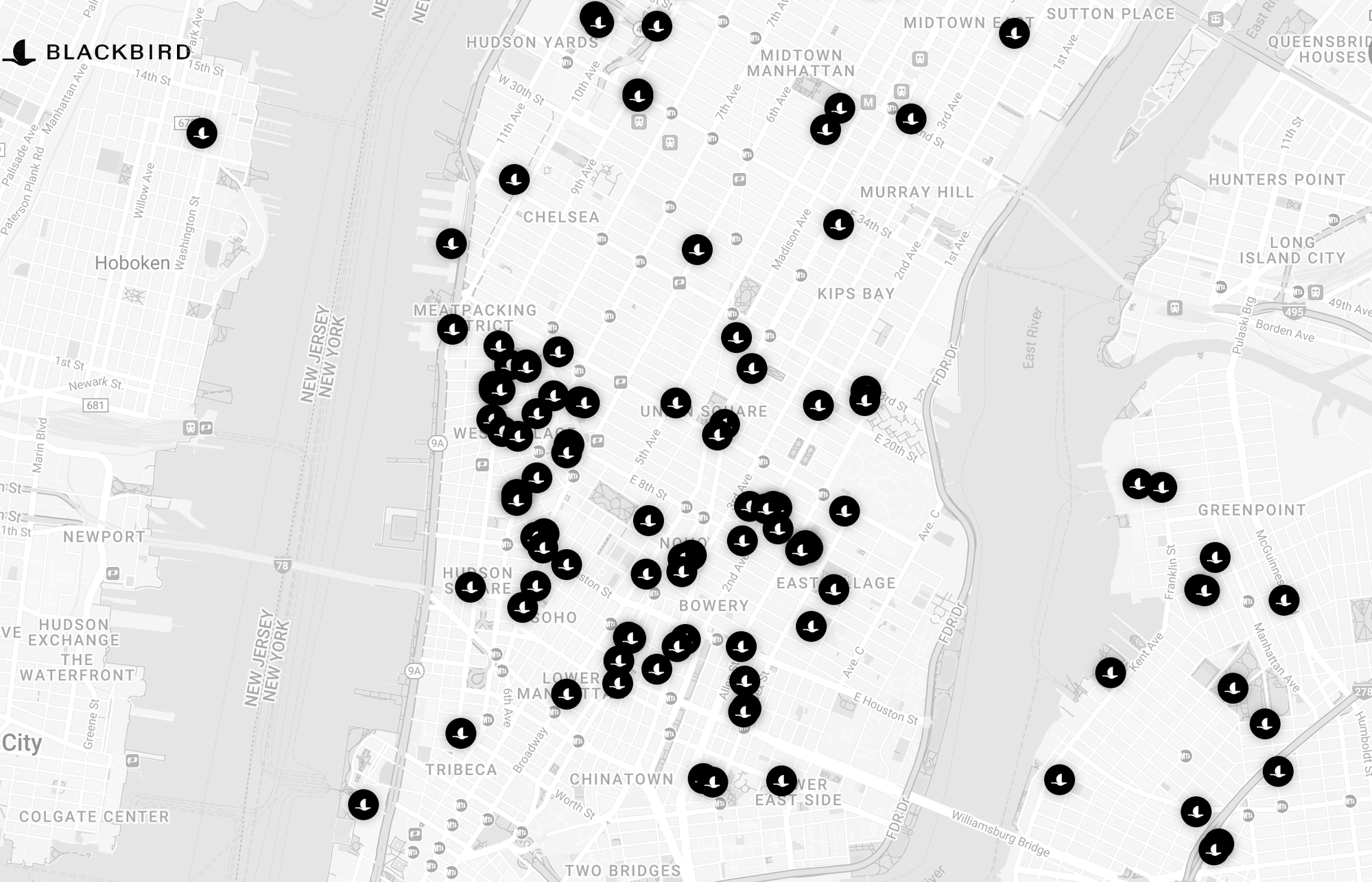
Source: Blackbird.xyz
Blackbird is a loyalty and membership platform for restaurants that issues memberships as NFTs, providing customers with various rewards and benefits. In late 2023, Blackbird secured a $24 million investment from A16Z and had previously raised $11 million from Union Square Ventures. The founder, Ben Leventhal, has an impressive entrepreneurial background in the restaurant and F&B industry, spanning nearly 20 years. He founded Eater, a media for food and local restaurant, in 2005 and later established Resy, a well-known restaurant reservation site, which he sold to American Express in 2019.
Blackbird offers features that help individual restaurants, which often lack advanced data and marketing capabilities, convert customers into regulars and enhance their competitive advantage in the local market. Customers earn $FLY tokens as rewards and receive benefits each time they visit a restaurant and interact with a device. Restaurants can set up their own membership tiers, offer various benefits based on visiting frequency, or use SMS features to easily manage reservation changes or additional seating requests. Additionally, Blackbird provides restaurants with essential customer information, such as birthdays, to offer targeted benefits for each customer. This helps improve customer management and service levels that was intractable for local restaurants.
Blackbird launched a pilot program last year and has since issued about 80,000 membership NFTs to approximately 30,000 users. Currently, Blackbird serves over 100 restaurants in New York, particularly in Manhattan, and is expanding to two more cities in the U.S., including Los Angeles, California.
3.4.2 Notable Projects
1) Slice.so
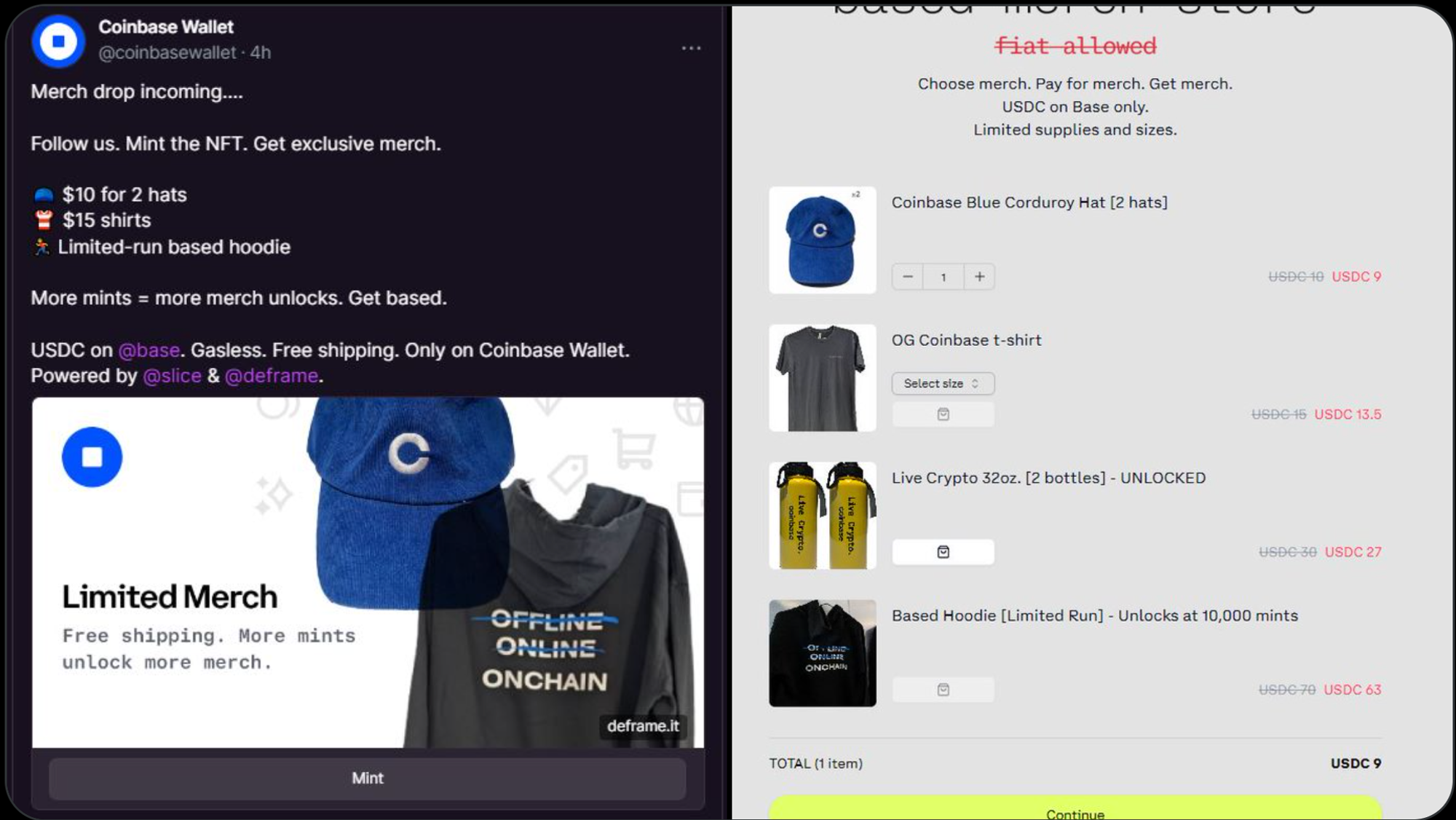
Source: Slice.so
Slice.so is a platform that allows users to issue and sell a variety of products on-chain, including event tickets, merchandise, and both digital and physical items. Although on-chain commerce is still in its early stages, Slice.so has been increasing its recognition by operating cafes and merchandise stores at Base's online and offline events since last year. A key feature of Slice.so is representing ownership with ERC-1155 NFTs, known as Slices. These NFTs indicate store ownership and revenue, allowing owners to transfer or sell their shares. For example, if a user owns 10% of the Slices issued, they receive 10% of that store's revenue.
Through Slice.so, sellers can offer a diverse range of products on-chain without limitations. Event tickets can be authenticated by verifying the holder’s address at the venue. For physical items, a product exchange link is provided to buyers who input their shipping information for delivery. Additionally, Slice.so enhances the selling experience with features such as revenue sharing, support for various token payments, discounts, token gating, and NFT issuance
Despite launching less than a year ago, Base has quickly become a hub for consumer applications. Behind the advent and success of Base, there have been a mission to spread crypto to a broader audience and a focus on creators and builders. In the Base ecosystem, users often encounter exotic experiences not found in other blockchains or even traditional Web2 services. The rise of Base signifies more than just a new rollup ecosystem; it represents the emergence of a new category of onchain applications accessible to a wider audience. Dynamic and fast-evolving landscape of Base ecosystem highlights that we might be able to witness of next phase of this industry, where onchain applications penetrates into our daily lives and indistinguishable with Web2 services.
Thanks to Kate for designing the graphics for this article.
Dive into 'Narratives' that will be important in the next year